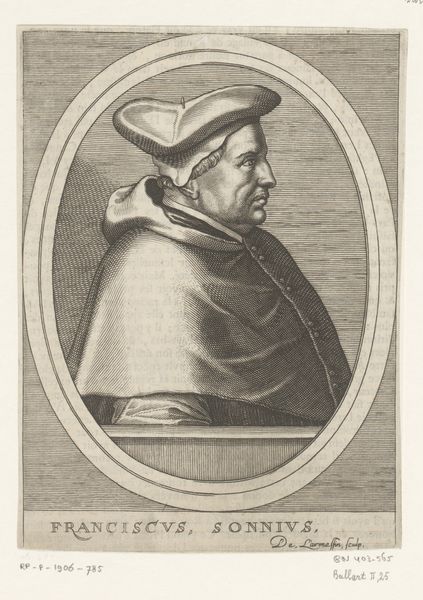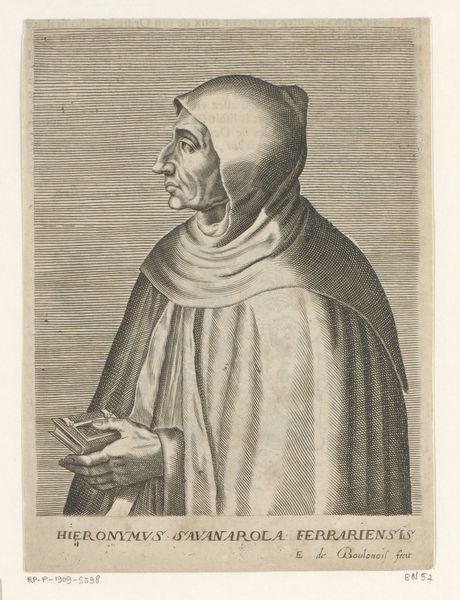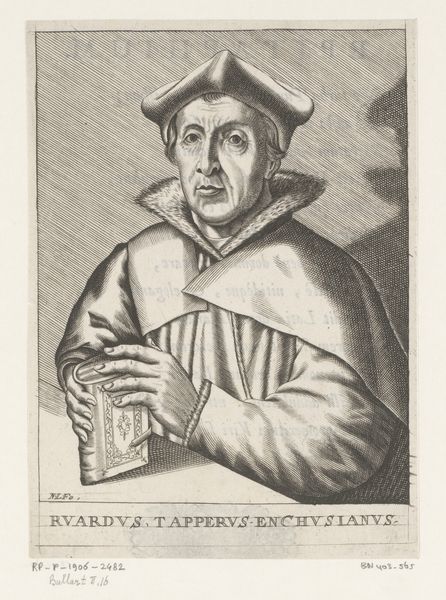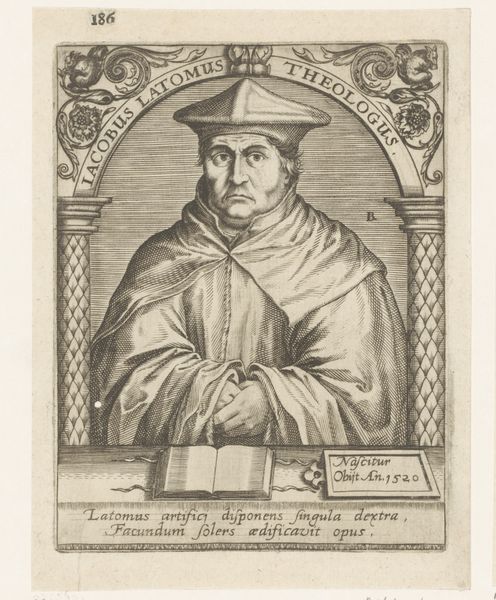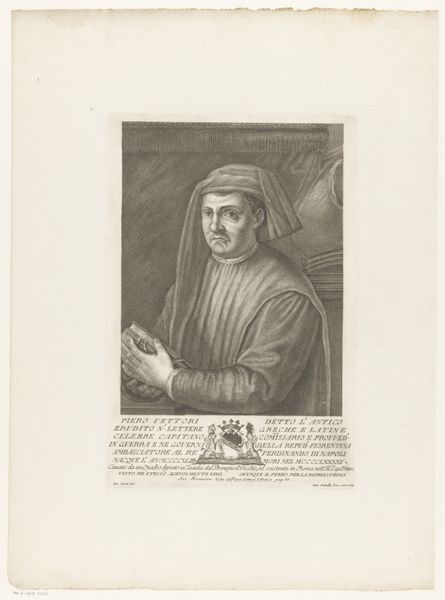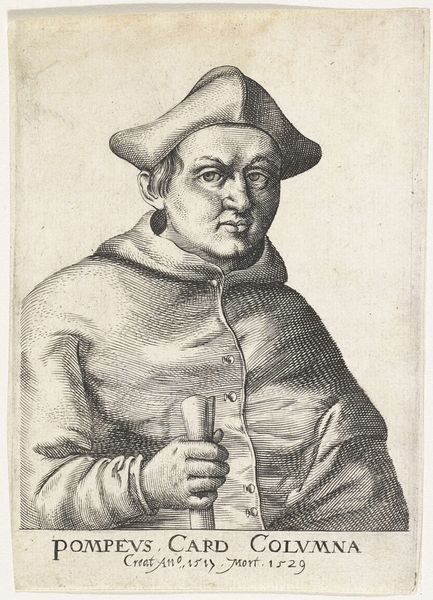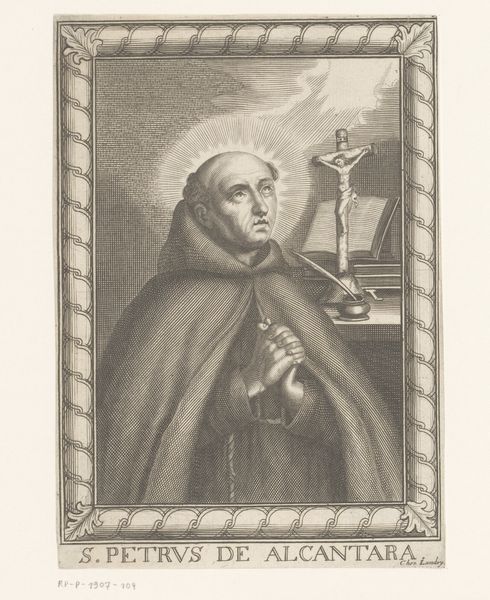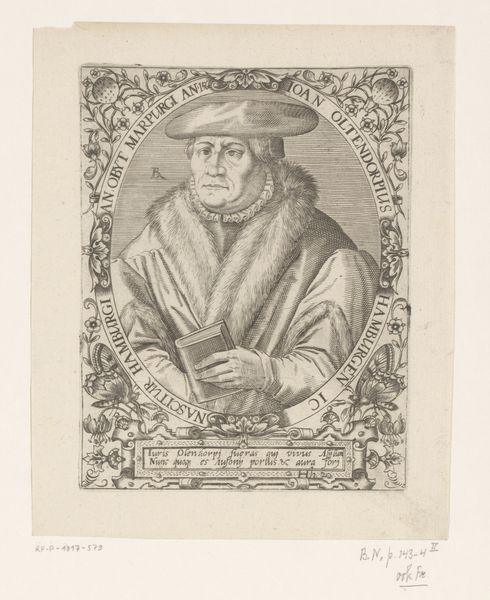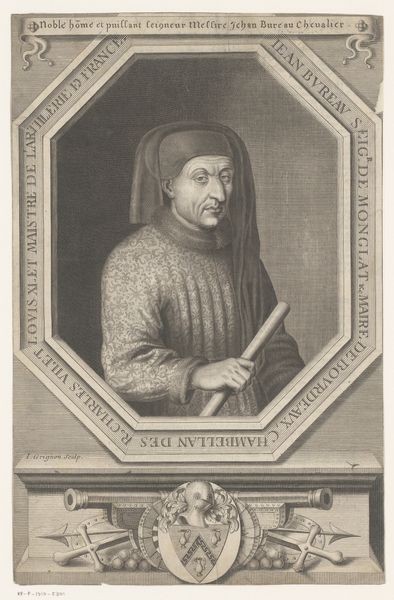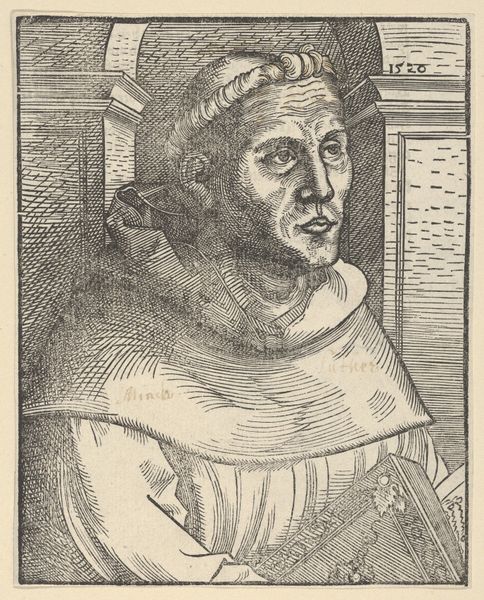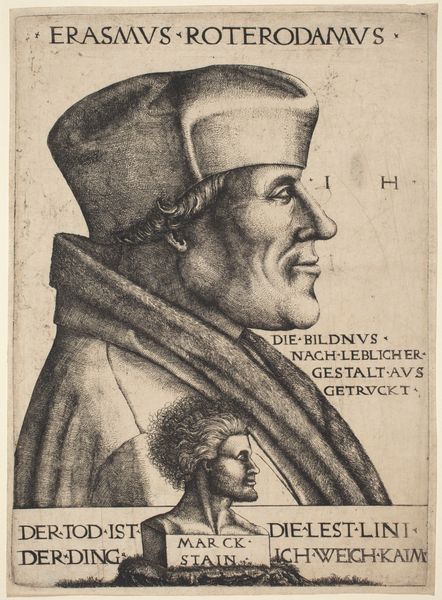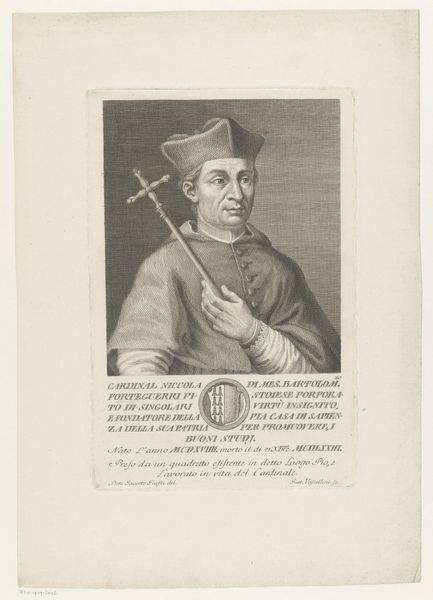
metal, engraving
#
portrait
#
baroque
#
metal
#
old engraving style
#
historical photography
#
portrait reference
#
line
#
history-painting
#
engraving
Dimensions: height 183 mm, width 134 mm
Copyright: Rijks Museum: Open Domain
Editor: Here we have Nicolas de Larmessin's "Portrait of Thomas Wolsey," created in 1682 using engraving on metal. It has this fascinatingly rigid quality due to the linework, almost like a blueprint. I find myself wanting to understand the artist's focus. What aspects of the engraving particularly capture your attention? Curator: The systematic deployment of line in this engraving demands careful consideration. Notice how variations in line thickness and density are used not to replicate light as it exists, but to create zones of tonal contrast. Light and shadow become constructed elements, not mimetic representations. The composition favours clarity of form above all else, even facial features are distilled into fundamental planes and edges. Is it representational or diagrammatic, then? Editor: So, the artist seems more interested in structure than realism? The textures seem almost secondary. Curator: Precisely. Observe how the folds of Wolsey's robes are described using only the most essential lines, reducing a complex textile into an abstract pattern. Now, consider the orthogonal hatching in the background: is this meant to be interpreted as depth, or merely as a flat, decorative field which sets off the figure? Editor: I see. It almost flattens the image, directing our eye back to the subject. It makes you question the function of background and foreground. I initially interpreted it literally but now notice its deliberate arrangement for pictorial effect. Curator: The interplay of these visual strategies encourages us to focus not on the illusion of three-dimensionality or psychological depth, but instead on the inherent properties of the medium itself – the potential of line to delineate, define, and ultimately, to communicate through a purely visual syntax. Is there something more symbolic at play here? What do you believe is more revealing about the portrait - the content or the artistic framework? Editor: Definitely the artistic framework. I now notice the artist using composition as a language itself. Thanks! Curator: It's been enlightening! The piece provides such unique insight into line and form, and also demands us to think critically about our first assumptions.
Comments
No comments
Be the first to comment and join the conversation on the ultimate creative platform.
